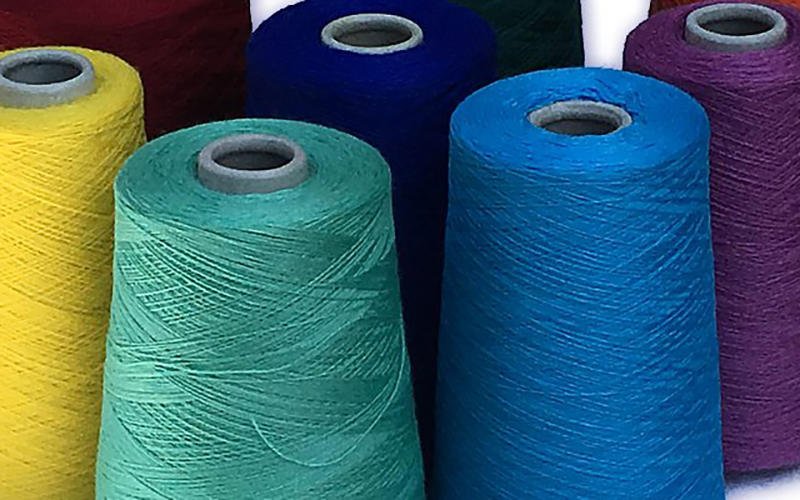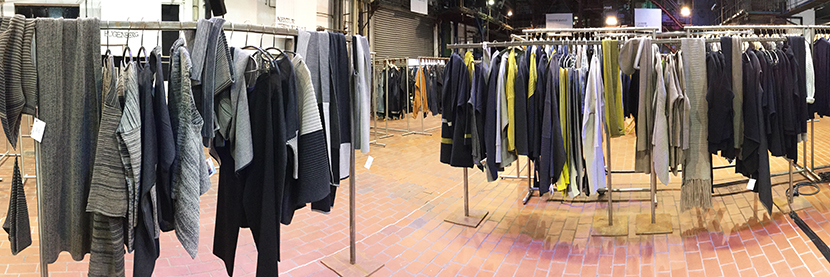Why viscose?
Viscose is becoming increasingly popular and is fully in line with the sustainability trend.
What is viscose?
The basis of viscose is Cellulose. The natural substance is obtained from the wood of beech, spruce, bamboo or eucalyptus. Various chemical substances are added to the cellulose, which in turn turns the end product into a synthetic fabric: the cellulose fibres are pressed through nozzles with water, carbon disulphide and caustic soda under high pressure, the so-called viscose process.
Viscose is therefore semi-synthetic. It can neither be clearly categorised as a natural fibre (such as wool, cotton or silk) nor as a completely synthetic fabric (such as polyester or nylon). This is why the fabric is often traded under different names, including "rayon", "rayon" or "artificial silk".
Viscose properties
Viscose
- visually resembles cotton and linen and also has similar properties,
- is easy to care for, easy to wash and you don't necessarily have to iron it,
- is pleasant on the skin, soft and does not scratch,
- is very absorbent and easily absorbs moisture.

Viscose - how sustainable is the fibre?
Viscose is versatile and uncomplicated, the advantages of which cannot be denied: It is based on the renewable raw material cellulose. Unlike purely synthetic materials such as polyester, no petroleum is used in its production, and pesticides are also largely avoided in cellulose cultivation.
However, it can bring problems for the environment: Even if the cellulose fibres are of natural origin, the viscose process is a complex one - it requires a lot of energy and also chemicals.
Please pay attention! Viscose made from a sustainable production in Europe because high occupational safety and environmental protection measures are strictly adhered to here. No toxic solvents are used, and the energy supply and a "closed" wastewater system are sustainable.
Which is more sustainable: clothing made from natural fibres or synthetics or semi-synthetics?
As is so often the case, this question cannot be answered in a general way: In addition to the material itself, other factors influence the life cycle assessment of a garment, for example
- Where does the material come from and how was it obtained?
- How far were the materials transported?
- How was the fibre treated?
- Was the fibre obtained from waste products?
- How long can I wear the garment? And can it be disposed of easily?
So there are big differences in the life cycle assessment of all fibres. But that doesn't mean it doesn't make a difference what you buy. Viola Wohlgemuth, textile expert at Greenpeace, advises in principle to buy natural fibres because they do not cause microplastic emissions. But that does not mean that textiles made of natural fibres such as wool, cotton or linen are unconditionally recommendable, because "just because a fibre is made from a natural product does not mean that it is biodegradable," warns Wohlgemuth. Pure wool, for example, decomposes in nature, but fabrics in which wool fibres have been mixed with synthetics, for example, do not. The fibre itself also says nothing about long-lasting chemicals that enter the environment via textiles.
Synthetic fabrics such as polyester and synthetic fibre blends are usually not biodegradable. Semi-synthetic fabrics such as viscose, modal or lyocell are better. These are not based on fossil raw materials, but on cellulose from plants. Although they are also processed using chemicals, they are easier and faster to biodegrade.
Conclusion: Overall, it is the eco-balance of the whole garment that matters. From the cultivation and mindful use of raw materials, chemicals and labour in viscose production, to the manufacture of the yarn and the garment, to the sale and the length of time the garment is used.
Viscose yarn from austriandesign.at
The viscose yarn that austriandesign.at knits is produced in Italy, is ÖKO-Tex 100 and FSC® (FSC-C1422991) certified. This is very important to austriandesign.at, because FSC® stands for "Forest Stewardship Council®" and is an international certification system for more sustainable forest management. The wood used for viscose production has an FSC®-seal and comes from forests that are responsibly managed.
This FSC®-certification and a Production in Europewhere high social and environmental standards are strictly adhered to, ensure a thoroughly sustainable product!
The viscose yarn is light, soft and has a silky sheen. The mottling makes it look even more like linen, but the wearing properties are the same. It has a strong twist, which makes the surface closed, thus no pilling possible and pleasant on the skin.
Last but not least!
The most sustainable way is to buy the best quality Made in Austria and to wear the pieces for as long as possible. That's why austriandesign.at only knits the best yarn qualities, processes very high quality and offers a repair service so that you can enjoy your clothes for a long time and have a clear conscience.
For more information: www.utopia.de

